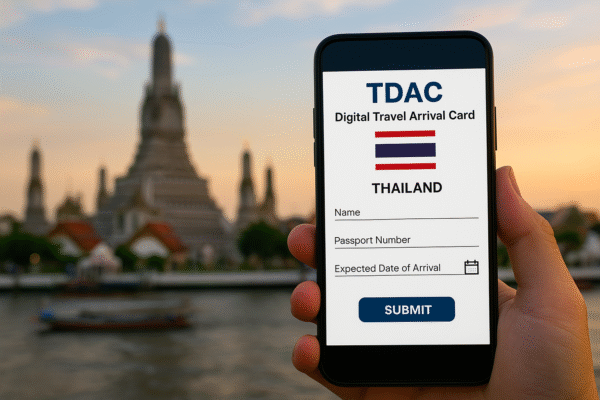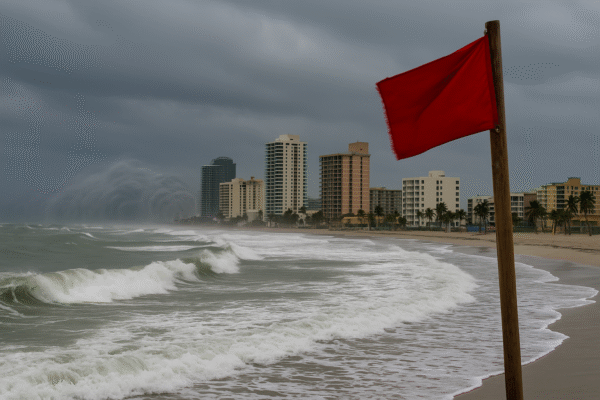In a strategic move aimed at curbing visa overstays, the United States will implement a new visa bond pilot program beginning August 2025, targeting visitors from countries with consistently high overstay rates. According to the U.S. Department of Homeland Security (DHS), this initiative is part of a broader effort to bolster immigration compliance and ensure national security. However, tourism experts warn the move could have significant repercussions for global travel, particularly for developing nations with limited travel freedoms.
Which Countries Are Impacted?
The program focuses on travelers from countries with the highest overstay rates under B-1/B-2 tourist and business visas. Based on the latest DHS Entry/Exit Overstay Report, some of the most affected nations include:
- Myanmar (62.59%)
- Bhutan (58.41%)
- Turkmenistan (55.07%)
- Djibouti (53.44%)
- Liberia, Venezuela, and Angola also feature on the list with elevated overstay percentages.
These countries are characterized not only by high overstay rates but also by limited passport power. As per the Henley Passport Index 2025, passports from Myanmar, Eritrea, and Venezuela rank among the lowest globally, offering visa-free or visa-on-arrival access to fewer than 45 countries.
Understanding the Visa Bond Requirement
Under the new policy, travelers from designated high-risk countries will be required to pay a refundable visa bond ranging from $5,000 to $15,000, depending on their risk profile and visa history. The bond acts as a financial guarantee that the traveler will comply with the visa’s duration terms. Failure to exit the U.S. within the permitted timeframe could result in forfeiture of the bond.
Moreover, the introduction of the $250 Visa Integrity Fee, set to go into effect on October 1, 2025, adds another financial hurdle for potential visitors.
Tourism and Financial Implications
For many citizens of lower-income nations, the combined cost of the bond and additional fees could make travel to the U.S. financially prohibitive. A family of four from Myanmar or Angola, for instance, might face up to $60,000 in total bond deposits—an insurmountable amount for most.
According to the U.S. Travel Association, these policies could create a chilling effect on legitimate tourism. “We understand the importance of immigration enforcement,” a spokesperson noted, “but the policy risks undermining one of America’s strongest soft-power tools—tourism.”
Global Travel Trends: A Shift in Destination Preferences
As international travelers weigh their options, the U.S. may become less attractive compared to countries with more welcoming and affordable visa regimes. Destinations like Thailand, Turkey, Malaysia, and parts of the European Union could see an uptick in visitors from affected countries due to easier access and lower entry barriers.
Tourism boards across Southeast Asia and Africa are already strategizing how to capitalize on redirected travel demand, offering streamlined visa processes and promoting budget-friendly travel packages.
Balancing Immigration Enforcement with Tourism Growth
The COVID-19 pandemic severely impacted the U.S. tourism industry, which contributed $1.9 trillion to the economy in 2019 according to the U.S. National Travel and Tourism Office (NTTO). While travel numbers have been recovering, the visa bond policy could stall momentum, particularly from emerging travel markets in Asia and Africa.
U.S. policy experts recommend a balanced approach—one that discourages visa overstays without penalizing genuine tourists or damaging economic growth.
“This program is a pilot, and it should be assessed not only on its success in reducing overstays but also on its impact on international goodwill and tourism revenues,” says Professor Lauren Hall, an immigration policy analyst at Georgetown University.
What Should Travelers and Travel Agencies Know?
Key Points:
- The visa bond program begins August 2025.
- Applies to high-risk countries based on DHS overstay data.
- Bonds range from $5,000 to $15,000 per applicant.
- Additional $250 Visa Integrity Fee starts October 1, 2025.
- The bond is refundable upon timely departure from the U.S.
Travel agencies, embassies, and tourism operators are advised to begin educational campaigns to help travelers understand the policy and make informed travel decisions.
Conclusion: Navigating the Road Ahead
The U.S. visa bond initiative signals a growing trend among developed nations to tie immigration enforcement to travel policy. While it aims to tackle genuine challenges posed by visa overstays, its unintended consequence may be the erosion of tourism from countries with weaker passports and lower incomes.
As the program rolls out in 2025, its outcomes will be closely monitored by global tourism stakeholders, immigration policymakers, and international travelers alike. The challenge ahead lies in crafting an immigration system that enforces the law while preserving the United States’ position as a top global travel destination.
For more travel news like this, keep reading Global Travel Wire




















